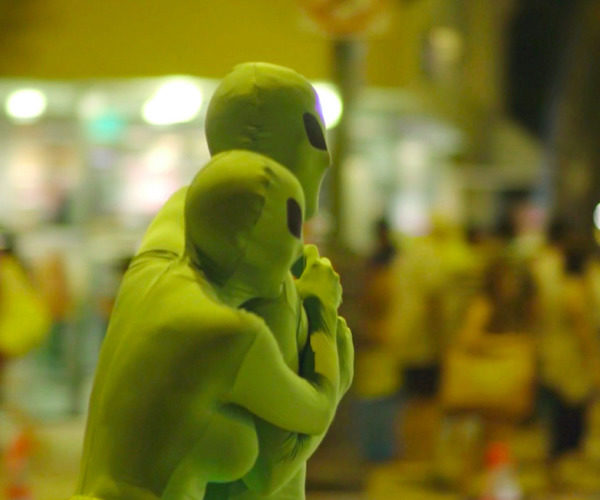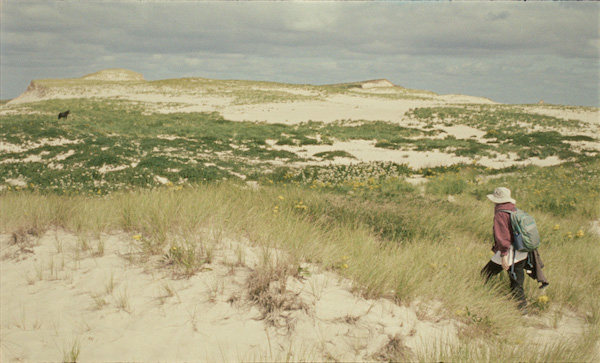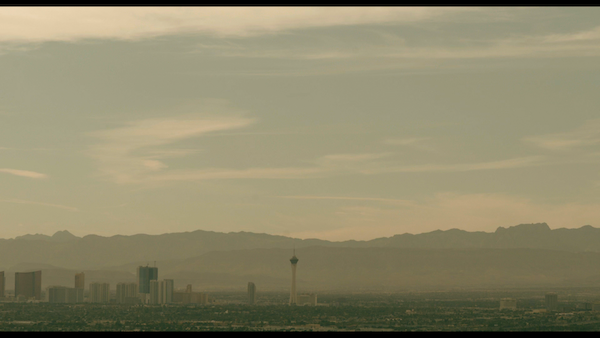Doc Talk: The Camden International Film Festival — Location, Location, Location
By Peter Keough
This year the Camden International Film Festival, which may be the finest documentary film festival in New England, examines the importance of place.
If you can’t make it to Toronto for their big festival (September 8-18) then the Camden International Film Festival (September 15-17; online September 15-25) might offer an excellent alternative. About a four and a half hour Amtrak ride down the Maine coast, Camden along with its neighbors Rockport and Rockland hosts what may be the finest documentary film festival in New England (pace Salem, Newburyport, and GlobeDocs). You might call it the documentary version of the Toronto International Film Festival if Toronto did not already have Hot Docs. This year CIFF has programmed 34 features, including among the former these three must-sees. Fittingly for a festival that takes place amongst such picturesque surroundings all three concern the impact people have on the places where they find themselves – and vice versa.

A scene from Jennifer Rainsford’s All of our Heartbeats are Connected through Exploding Stars.
If you were living in on the northeast coast of Japan on March 11, 2011, you would have experienced one of the worst earthquakes in modern history. The subsequent tsunami killed nearly 20,000 people with thousands more missing. Jennifer Rainsford’s meditative, poetic, often poignant All of our Heartbeats are Connected through Exploding Stars (screens September 16 at 12:30 p.m. at the Strand Theatre with live Q&A; available online September 15-25; go here) looks into the fate of some of the survivors.
Yasu lost his wife. The wave presumably swept into her into the sea. He has since taken up scuba-diving and obsessively searches the ocean for her remains. “When I stop moving in the middle of a dive I think of her,” he says. “I feel her close to me.” Satoko, a young woman, suffers from PTSD and survivor’s guilt. She has nightmares, has withdrawn from all her relationships, and dreads the tsunami’s return. Sachiko, an older woman, lost her husband. She copes by writing him letters. “We were defeated by nature,” she writes. “We can’t hold a grudge. There is no one to blame.”
As is suggested by the film’s title, if you lived anywhere in the world during the cataclysm you would also have been touched by it in some way. Rainsford’s voiceover narration points out that the power of the quake altered the rotation of the earth, making the day 1.8 milliseconds shorter. Years later, as far away as the small Hawaiian island of Kaho’olawe, large so-called “ghost nets,” clumps of ropes, nets, and mostly plastic debris swept into the ocean by the tsunami, have washed ashore. Volunteers sort through them and clean the beach of debris that came from 4,000 miles away and a decade ago.

A scene from Zoe Lucas’s Geographies of Solitude.
Like the Hawaiian beach sweepers in All of our Heartbeats, Zoe Lucas in Geographies of Solitude (screens September 18 at 12:30 p.m. at Journey’s End with live Q&A; available online September 15-25; go here) must deal with detritus that drifts in from thousands of miles away. For 40 years she has served as a naturalist on Sable Island — a thread of land (twenty-seven miles long by less than a mile wide) in the middle of the North Atlantic about 100 miles southeast of Nova Scotia — where among other duties she collects and inventories flotsam and jetsam washed ashore.
These items include thousands of plastic bottles, piles of rope and net fragments, and a vast, colorful collection of “nurdles,” the pea-sized pre-manufacture plastic pellets that along with other plastic products degrades into microscopic bits that are swallowed by animals, often killing them. Then there are the sacks of ribbon and balloons that have arrived from as far away as Indiana (she writes back to the senders if the address is available politely explaining why sending helium balloons aloft is bad for the environment).
Unlike Sachiko’s observation in Rainsford’s film, there is blame to be shared for the trashing of the island, but neither Lucas nor Mills is much into lecturing (though a lecture Lucas gave to school children a few years back is excerpted intermittently and is quite entertaining). Instead, the two record and catalogue the bleak island’s surprisingly rich and photogenic resources, which include a herd of feral horses, descendants of those abandoned on the island long ago which have since developed into their own distinct, hardy, and shaggy breed. Thousands of mournful grey seals make their homes there too as they moan and flop about and untidily give birth on the beach. There are songbirds and seabirds, and Lucas uncovers a surprising number of bugs, some of which are species unique to the island. Collected over four decades, the specimens and Lucas’s observations make for an impressive cabinet of curiosities and a sprawling logbook set down in meticulous spreadsheets.
All this immersive material is shot on lush 16 mm film stock which is sometimes subjected to unconventional exposure and development processes employing natural material found on the island. The resultant stunning images range from the macrocosmic (the ark-like ruins of an old A-Frame surmounted by a fountain of stars) to the mundane (ethereal, avant garde-like sequences such as one titled “Horse Hair, Bones and Sand Exposed in Starlight and Developed in Seaweed”) It’s kind of like the journals of Henry David Thoreau illustrated by Stan Brakhage.
Lucas had no intention of remaining on the island when she first took a job as cook for a crew of naturalists back in 1971, a position that soon expanded in responsibilities and duties. Now she looks back at a lifetime of solitude spent chronicling the births, deaths, lives, bowel movements, and posthumous contribution to the eco-system of the horses, seals, gulls, and other creatures in her slender realm. Does she regret this career of isolation and her dedication to studying this sublime microcosm? “It appears that my life is Sable Island,” she says. “That’s all I have. That’s all I do. I should have stopped long ago. But I just wasn’t paying attention to what was happening. Because it’s super interesting, rewarding, engaging, and fulfilling to be here. But I lost track of everything else.”
Or maybe it’s everyone else who’s lost track of what is important and Lucas who is paying attention to what is really significant.

A scene from Lily Frances Henderson’s This Much We Know.
After a close friend committed suicide, Lily Frances Henderson wondered what she might have lost track of in her friend’s behavior or demeanor that might have warned her of her friend’s intentions. In her film This Much We Know (screens on September 16 at 2:45 p.m. with a live Q&A at Journey’s End; available online September 15-25; go here) Henderson learns about a teenager, Levi Presley, who killed himself in Las Vegas around the same time as her friend. He was popular, accomplished, well-liked, and happy. Neither his parents nor his friends had any idea that he was suicidal until, as Henderson relates in a chilling, rapid-fire montage recounting his final actions, he took the elevator up to the observation deck of the Strat (formerly Stratosphere) Hotel, the tallest casino in Las Vegas, climbed over two security fences, and jumped.
To try to understand what happened to Presley, and indirectly to her friend, Henderson applies the quasi scientific journalistic template of the six questions – who, what, where, why, and how. The why, as usual, is the only one that really matters and it’s a stumper. But the where, she thinks, might offer insight. Las Vegas has one of the highest suicide rates in the country and at that time – 2002 – it was at its peak. This might be due in part to the city’s overall notoriety for tawdry hedonism, meretricious materialism, and desperate gambling. “Vegas is the most extreme and allegorical of American settlements, bizarre and beautiful in its venality and in its devotion to immediate gratification,” writes Joan Didion in her 1967 essay “Marrying Absurd.” But Henderson suspects that something more than that going on here. She learns that the same day that Presley killed himself the US Congress had approved of a proposal to bury all the country’s nuclear waste under Yucca Mountain, located just outside the city and a site sacred to indigenous people.
Could the free-floating evil of this plan – a project that was repeatedly delayed and finally cancelled leaving the accumulated tons of lethal waste with no permanent resting site – have contributed in some indirect, unconscious way to Presley’s self-destruction? Is the tendency to ignore painful truths such as the existence of lurking poisons with a half-life of millions of years and the capability of killing everybody in the world many times over the same as that which blinds us to others’ suffering? Henderson’s film answers none of these questions, but it provides a guide to how we can seek out the truth, and how to avoid it.
Peter Keough writes about film and other topics and has contributed to numerous publications. He had been the film editor of the Boston Phoenix from 1989 to its demise in 2013 and has edited three books on film, most recently For Kids of All Ages: The National Society of Film Critics on Children’s Movies (Rowman & Littlefield, 2019).

Great article, Peter, and so glad to see you bringing your documentary expertise and superb writing to the Arts Fuse. I would add one more to your list of great New England documentary fests: Newburyport, which is also happening this coming weekend. If you don’t want to drive five hours to Camden from Boston, drive one hour north to scenic Newburyport.
Thanks! Totally agree about Newburyport.